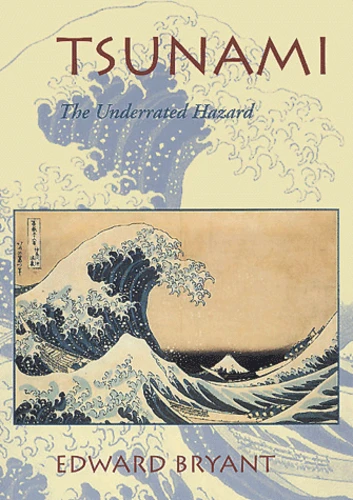Tsunami. The Underrated Hazard
Par :Formats :
- Paiement en ligne :
- Livraison à domicile ou en point Mondial Relay indisponible
- Retrait Click and Collect en magasin gratuit
- Nombre de pages320
- PrésentationBroché
- Poids0.745 kg
- Dimensions17,0 cm × 24,5 cm × 1,8 cm
- ISBN0-521-77599-X
- EAN9780521775991
- Date de parution01/01/2001
- ÉditeurCambridge University Press
Résumé
BETWEEN 1990 AND 2000 MORE THAN TEN MAJOR TSUNAMI events have impacted on the world's coastlines, causing devastation and loss of life. These events have made scientists aware that tsunami have been underrated as a major hazard, mainly due to the misconception that they occur infrequently compared to other natural disasters. Evidence for past great tsunami, or "mega-tsunami," has also recently been discovered along apparently aseismic and protected coastlines, such as those of Australia and Western Europe. These mega-tsunami are caused by either huge submarine landslides or the impact of meteorites and comets with the ocean. With a large proportion of the world's population living on the coastline, the threat from tsunami cannot be ignored. Were a mega-tsunami to occur today, the death toll would be in the tens of thousands, while the damage would exceed that of the largest disasters of the past century. Tsunami: The Underrated Hazard comprehensively describes the nature and process of tsunami, outlines field evidence for detecting the presence of past events, and describes particular events linked to earthquakes, volcanoes, submarine landslides, and meteorite impacts. While technical aspects are covered, much of the text can be read by anyone with a high school education. The book will appeal to students and researchers in geomorphology, earth and environmental science, and emergency planning, and will also be attractive for the general public interested in natural hazards and new developments in science.
BETWEEN 1990 AND 2000 MORE THAN TEN MAJOR TSUNAMI events have impacted on the world's coastlines, causing devastation and loss of life. These events have made scientists aware that tsunami have been underrated as a major hazard, mainly due to the misconception that they occur infrequently compared to other natural disasters. Evidence for past great tsunami, or "mega-tsunami," has also recently been discovered along apparently aseismic and protected coastlines, such as those of Australia and Western Europe. These mega-tsunami are caused by either huge submarine landslides or the impact of meteorites and comets with the ocean. With a large proportion of the world's population living on the coastline, the threat from tsunami cannot be ignored. Were a mega-tsunami to occur today, the death toll would be in the tens of thousands, while the damage would exceed that of the largest disasters of the past century. Tsunami: The Underrated Hazard comprehensively describes the nature and process of tsunami, outlines field evidence for detecting the presence of past events, and describes particular events linked to earthquakes, volcanoes, submarine landslides, and meteorite impacts. While technical aspects are covered, much of the text can be read by anyone with a high school education. The book will appeal to students and researchers in geomorphology, earth and environmental science, and emergency planning, and will also be attractive for the general public interested in natural hazards and new developments in science.

